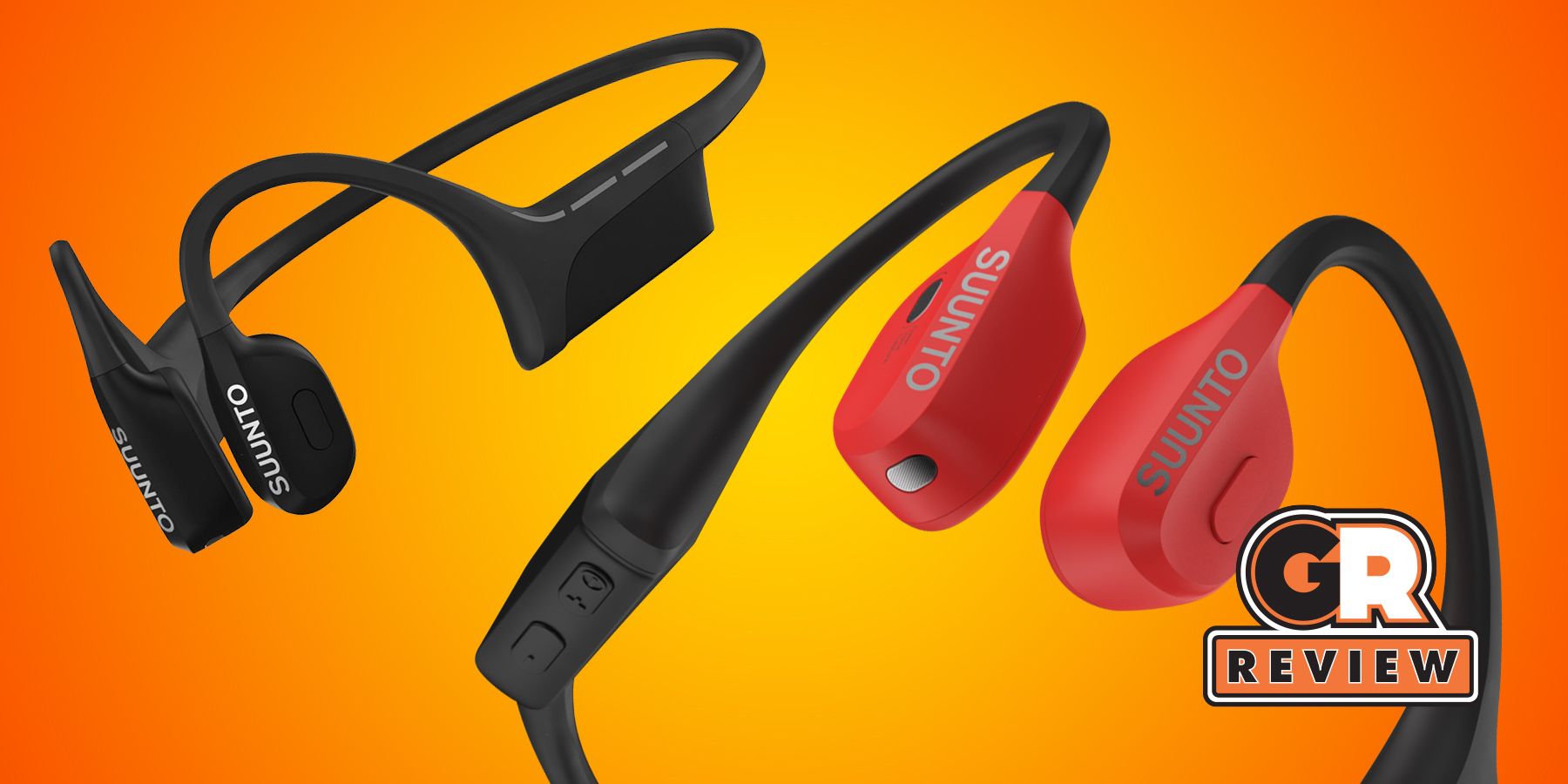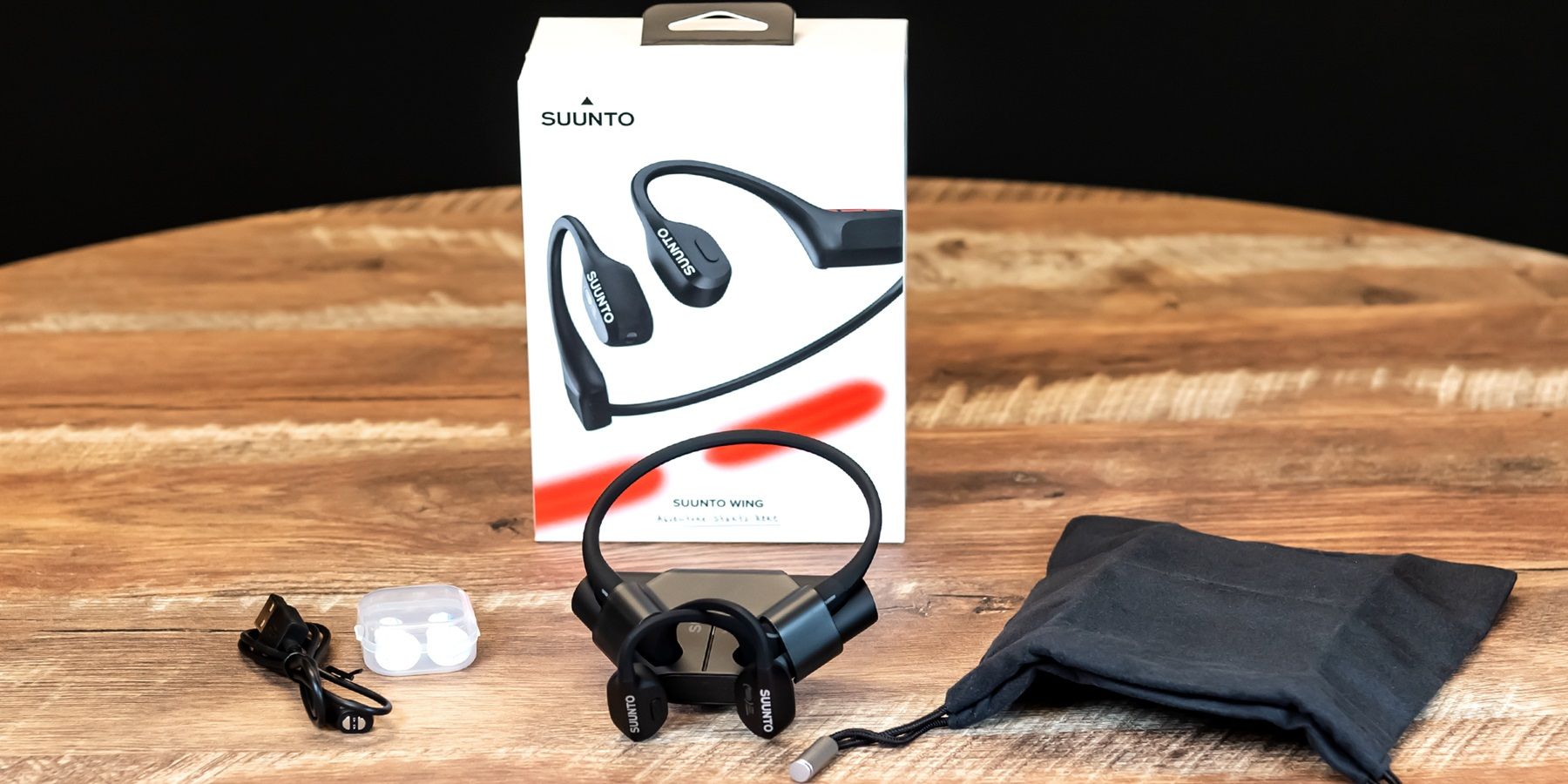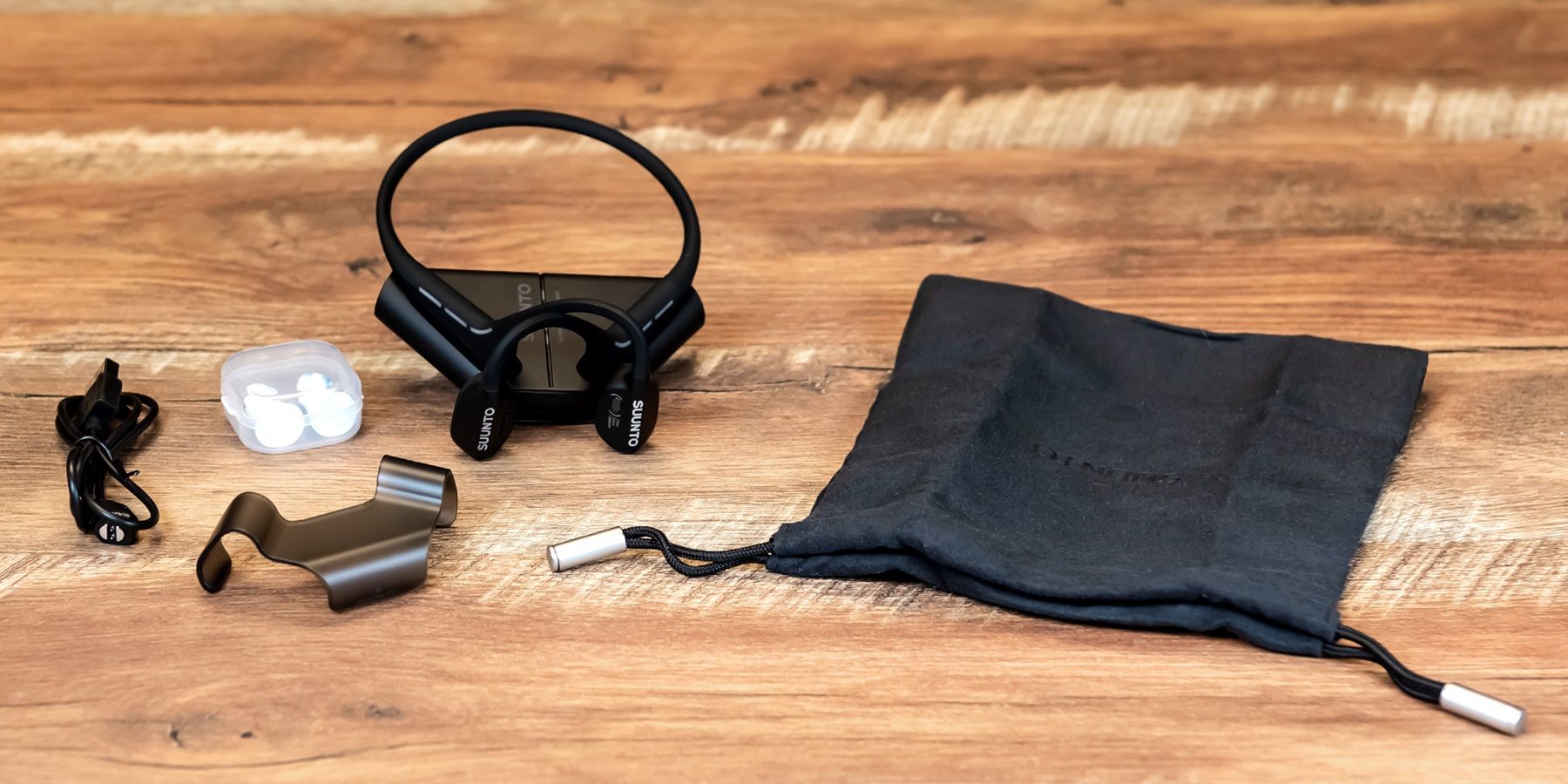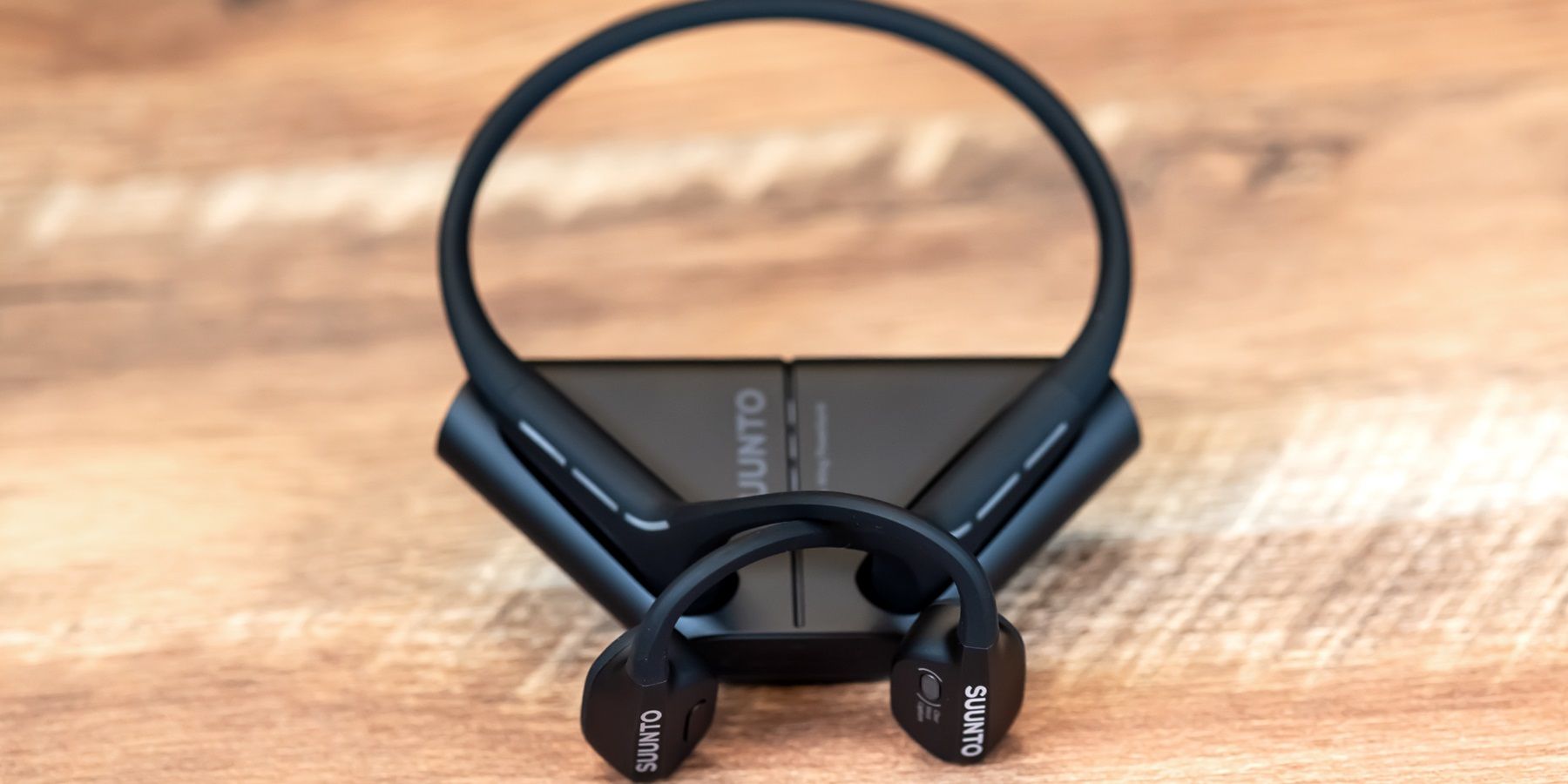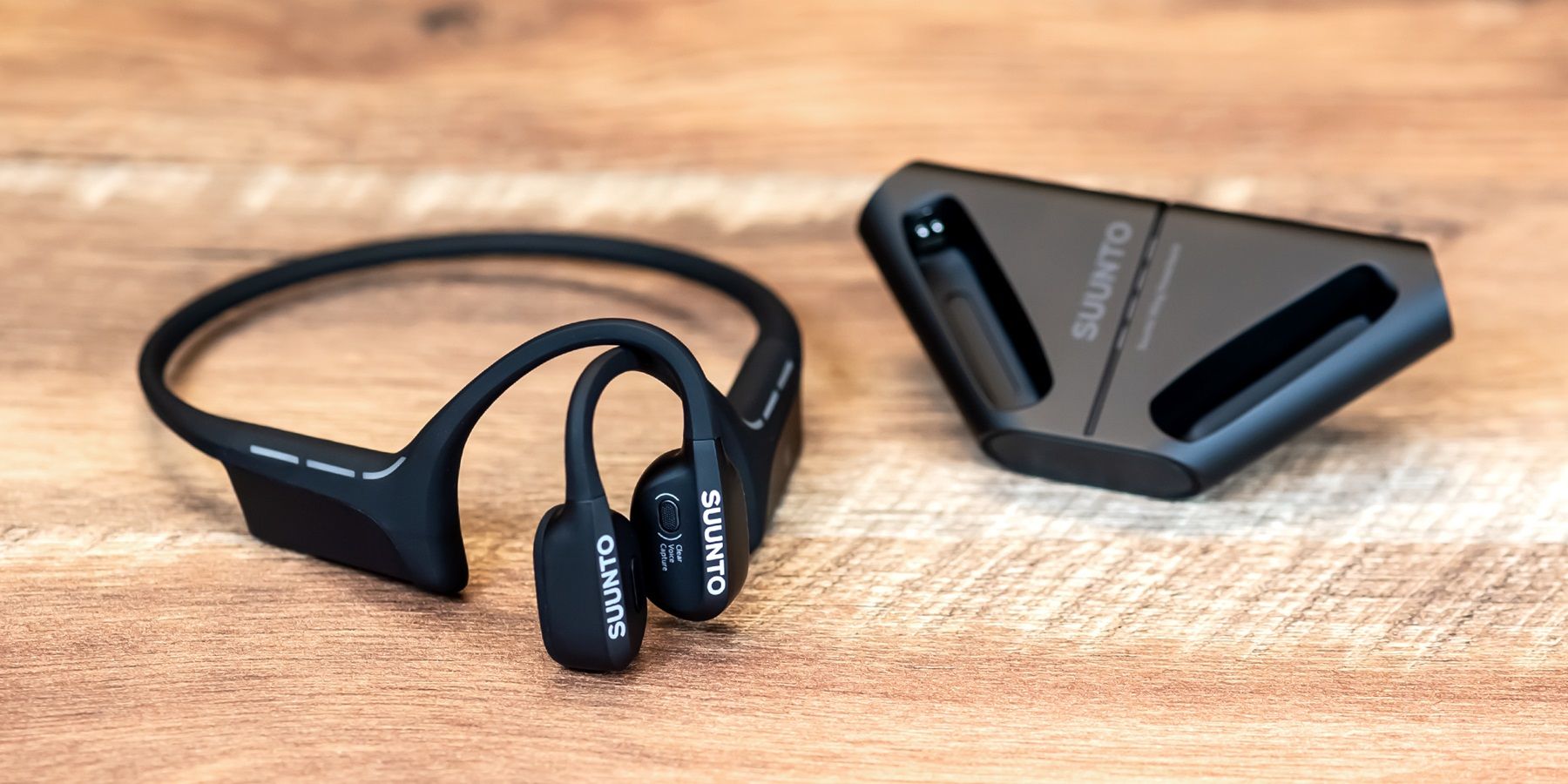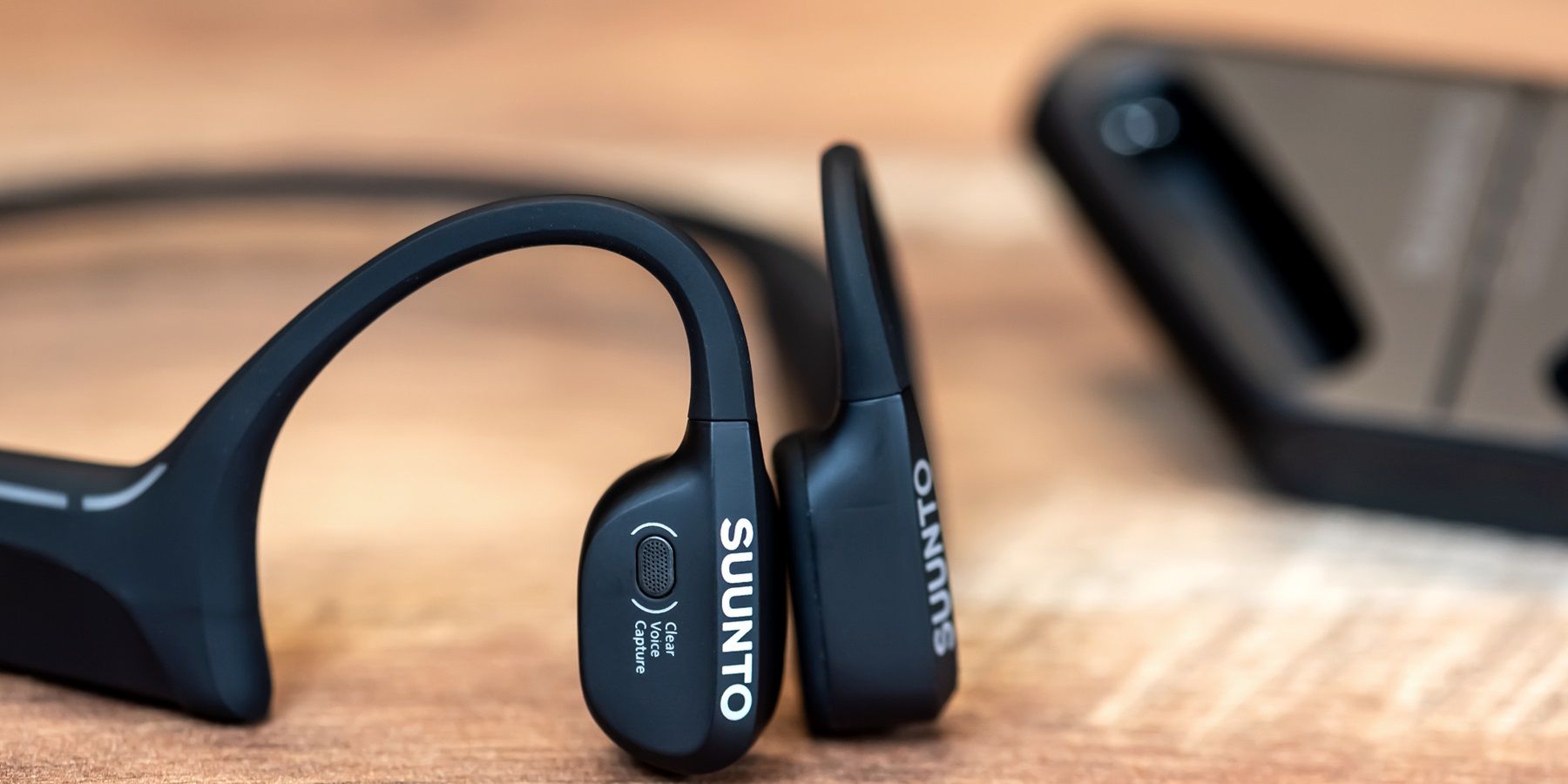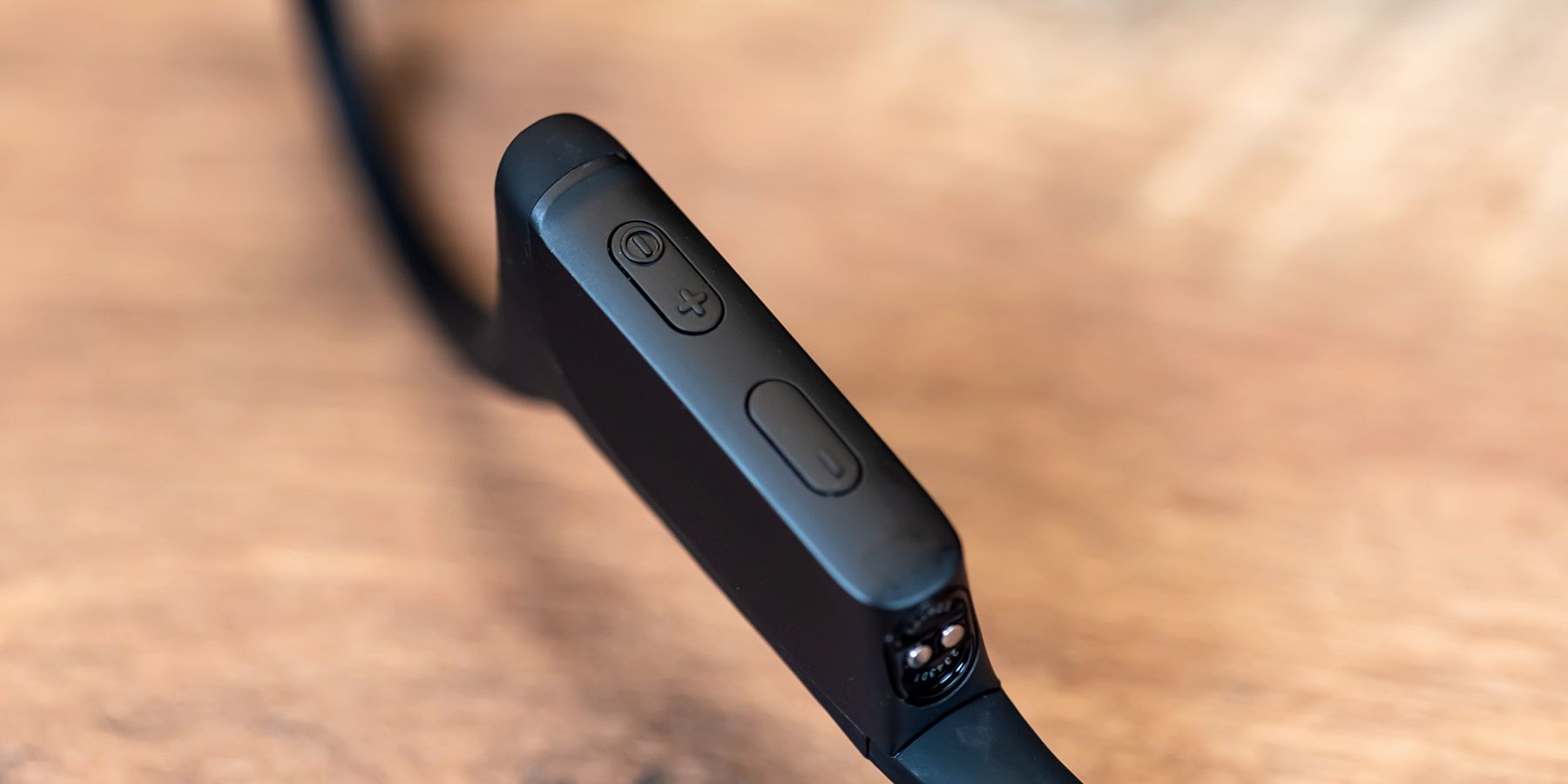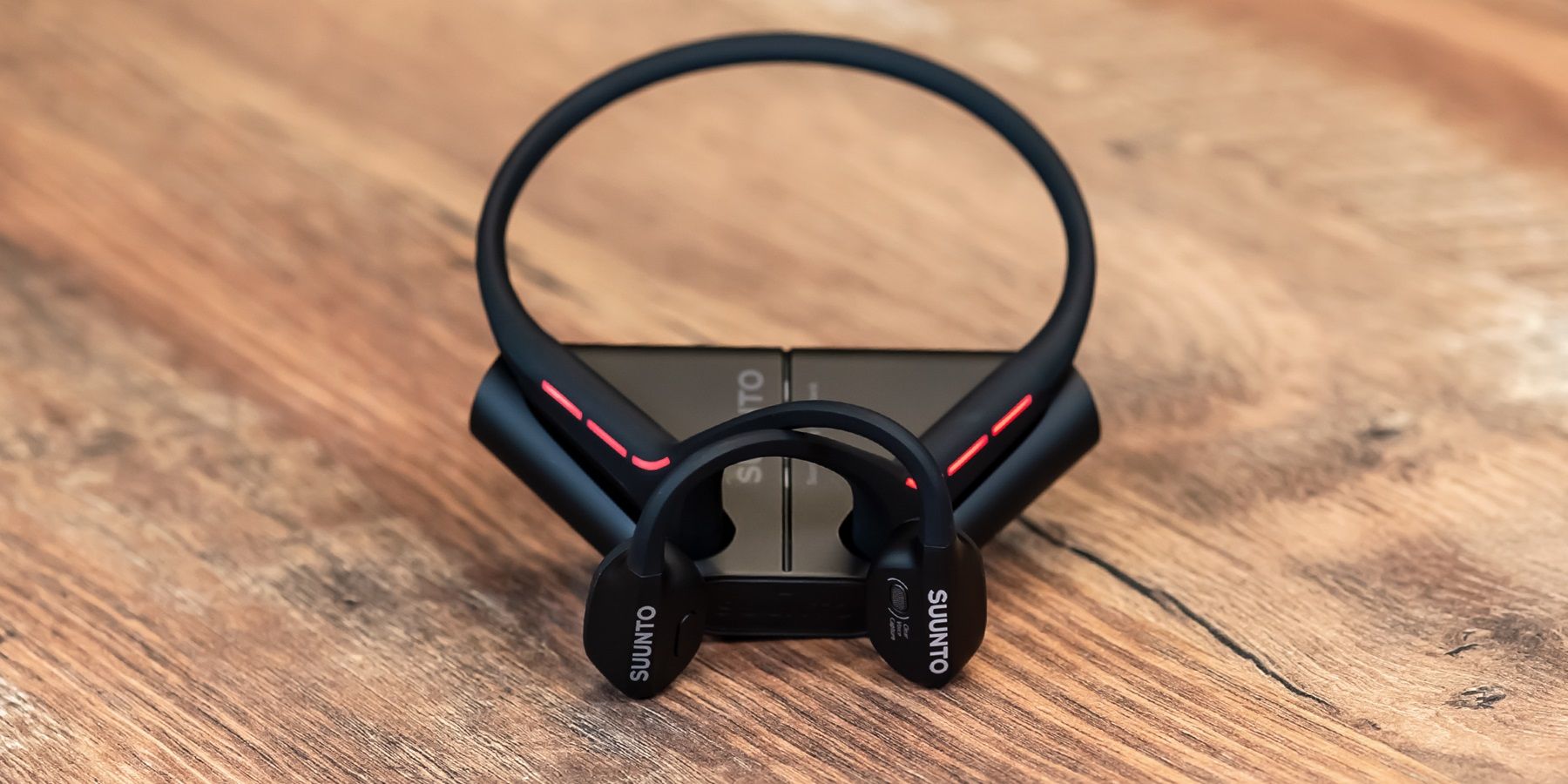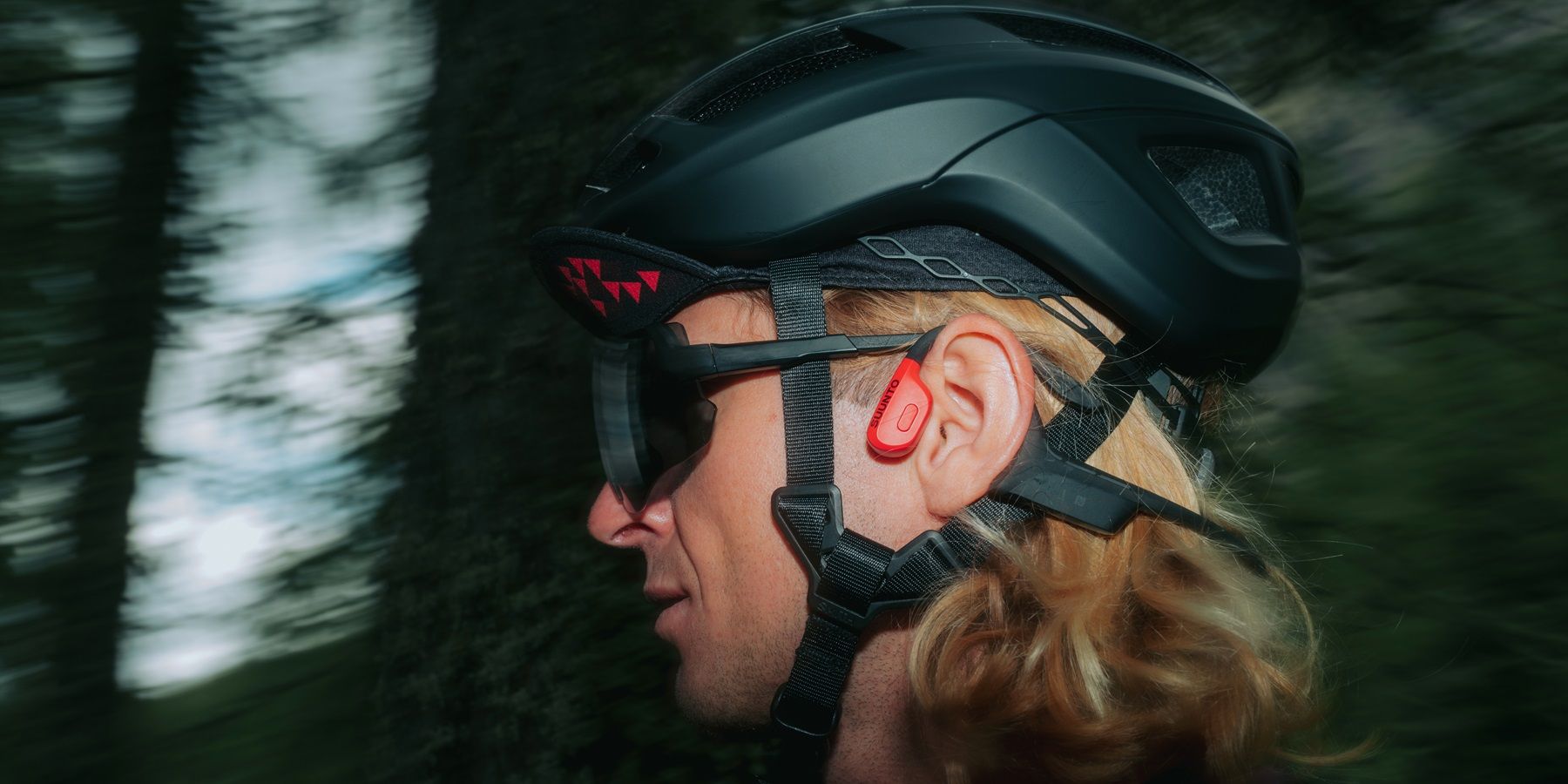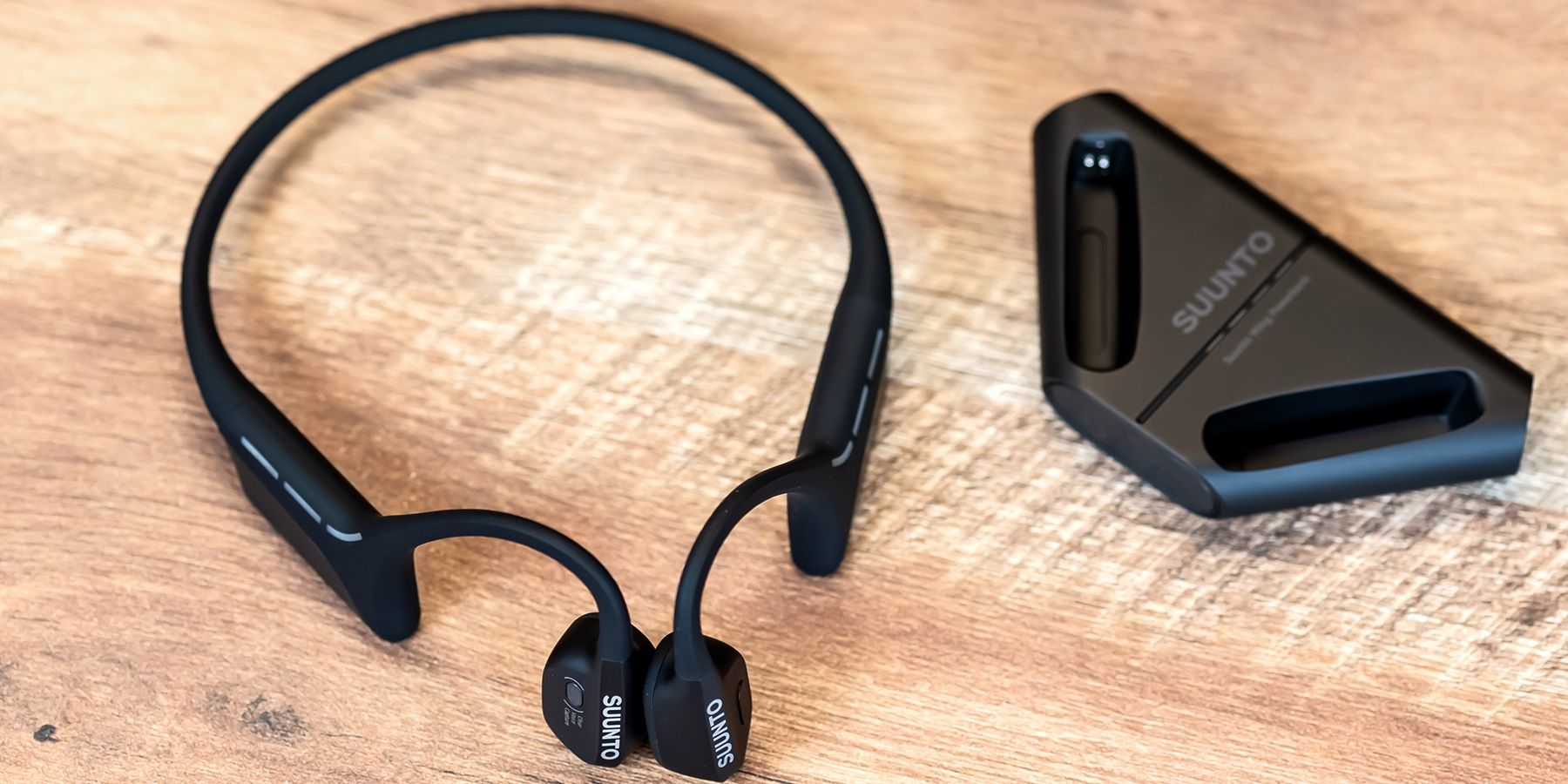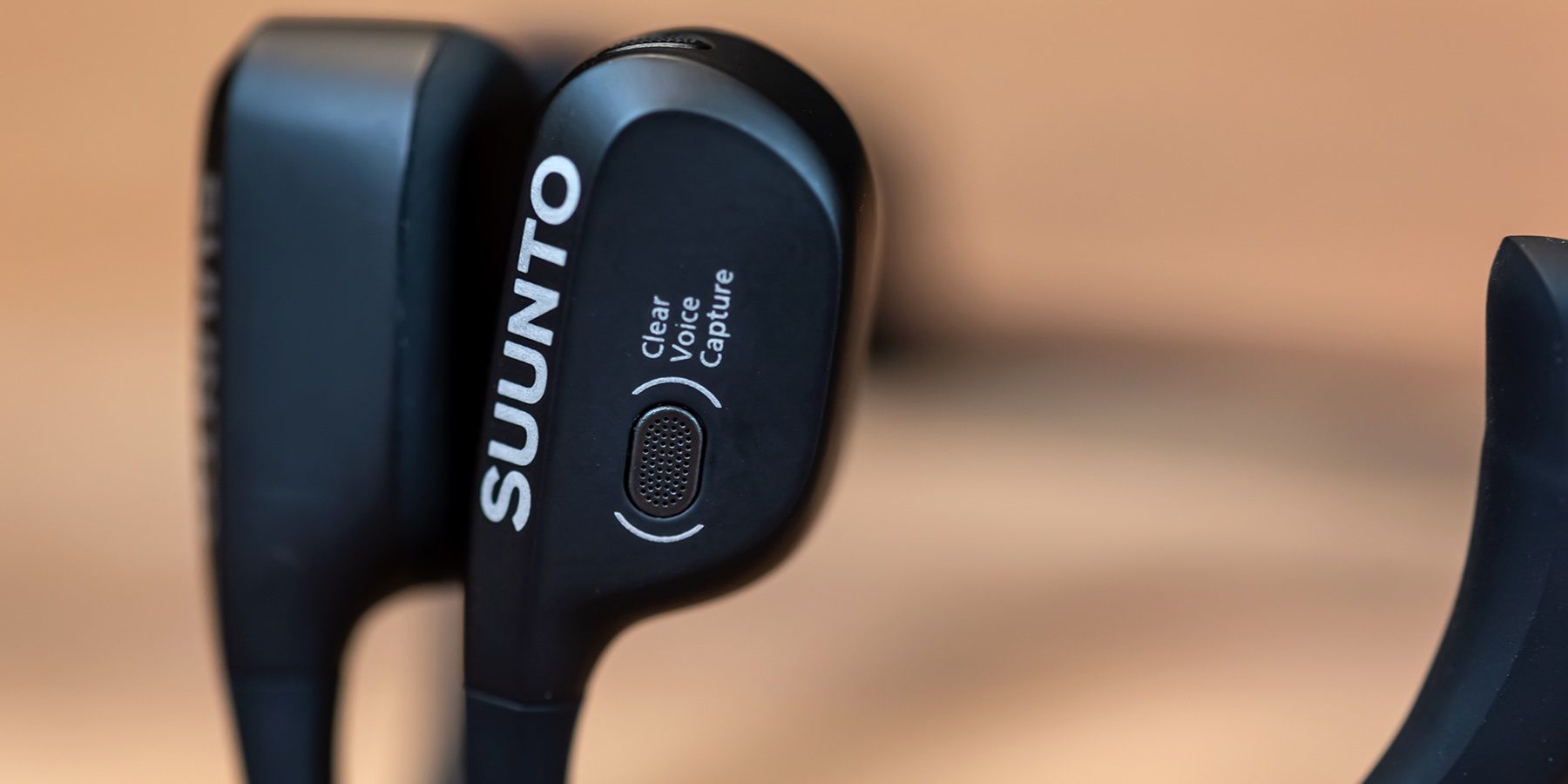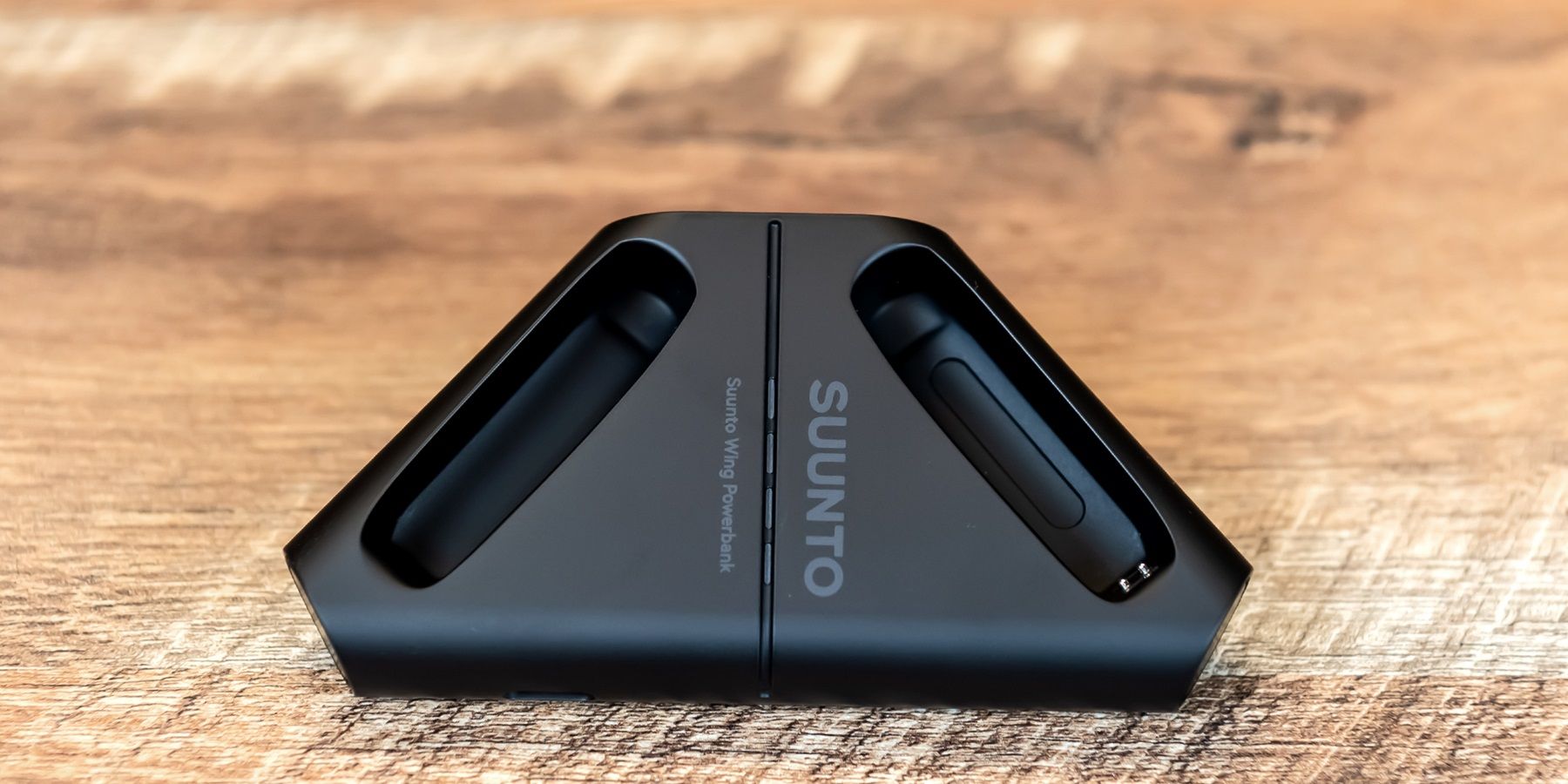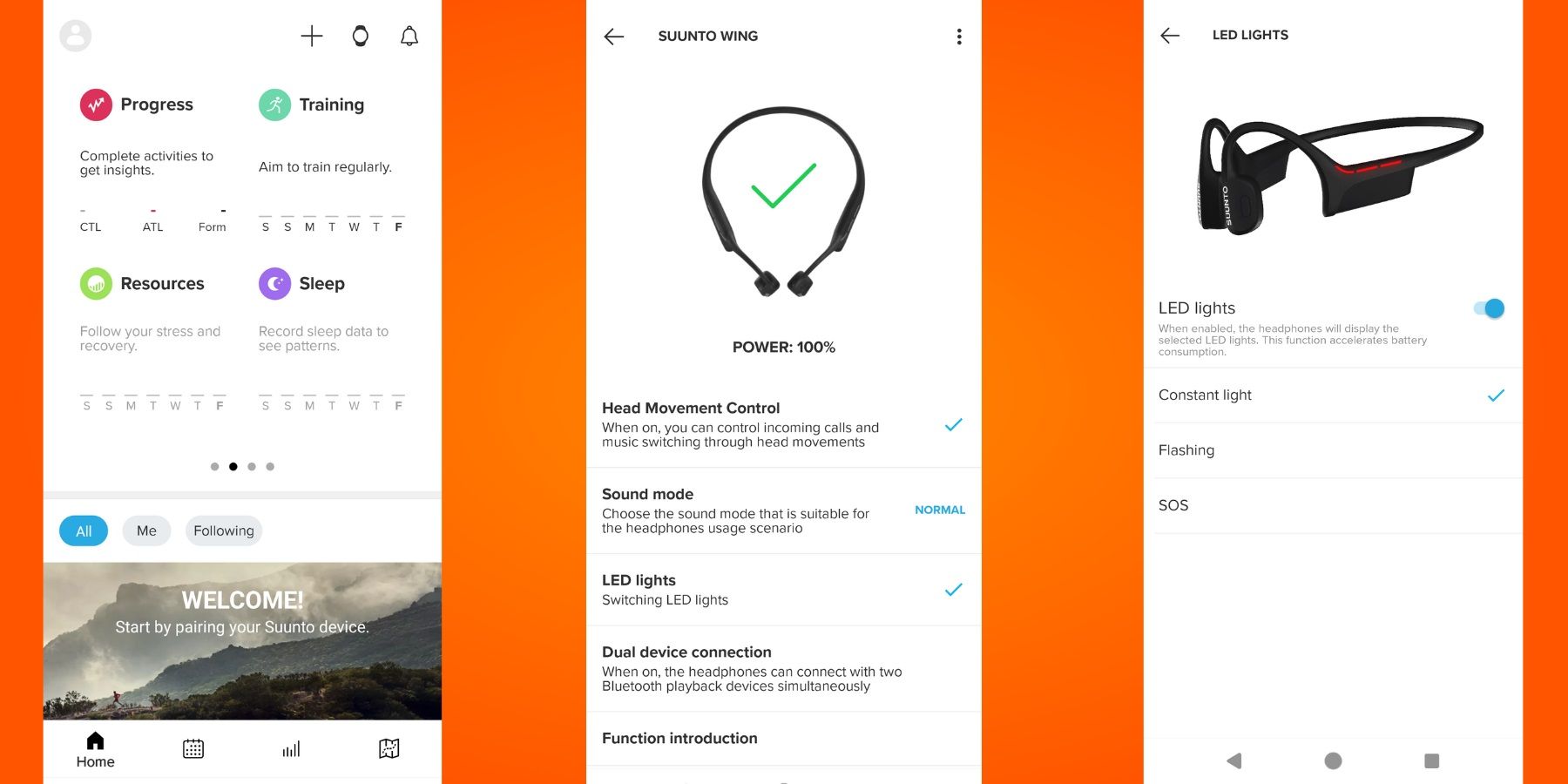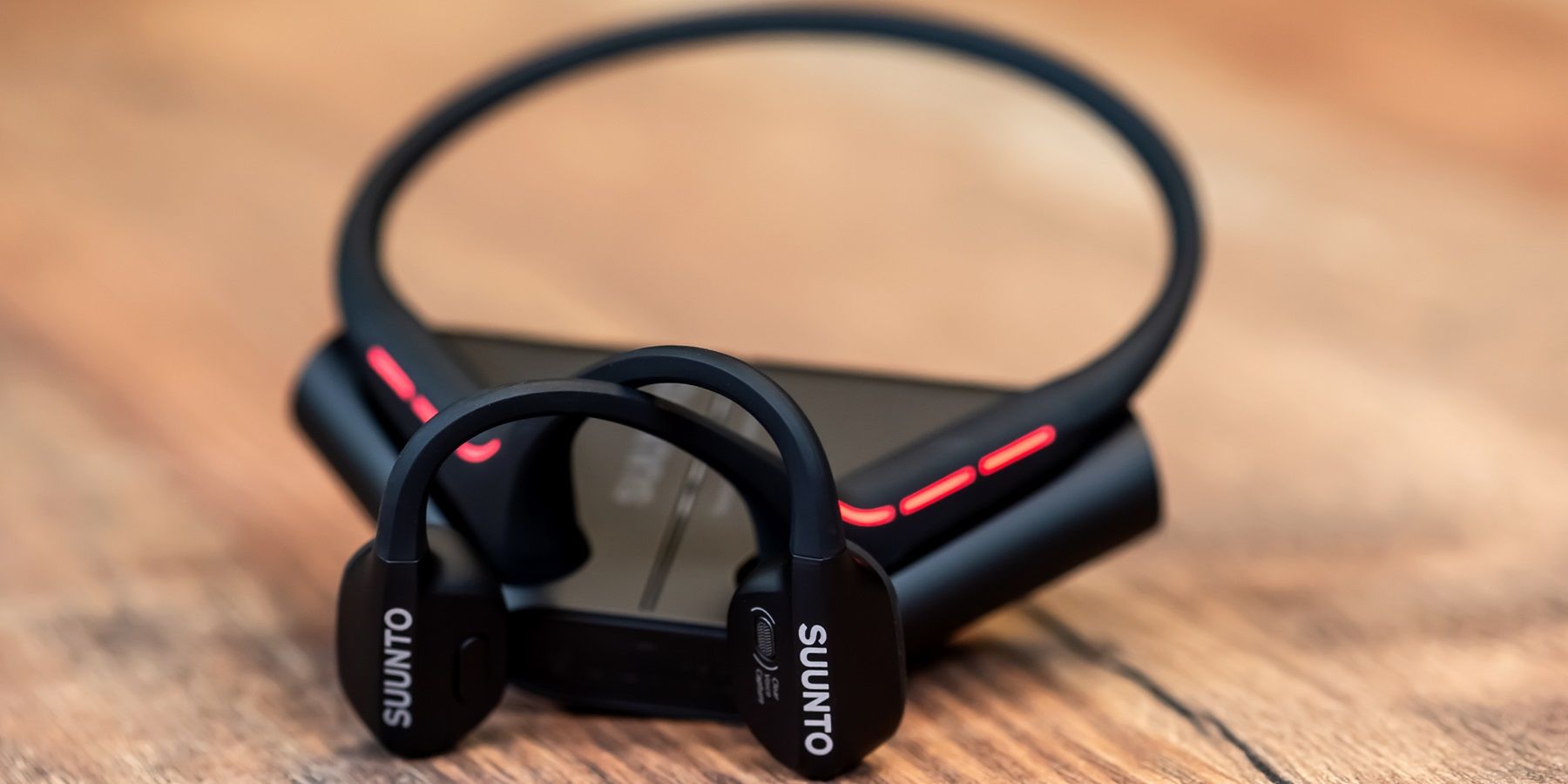In the world of wireless audio gear, wireless headphones, headsets, and earbuds are dominant forces. Yet, some buyers focused on portability find cord-free headphones too cumbersome to exercise with. Meanwhile, wireless earbuds tend to be easily misplaced and aren’t ideal for listeners who need to stay aware of their surroundings. Consequently, bone-conduction headphones like the Suunto Wing address most of these drawbacks.
Best Headphones for Running in 2024
Run to the beat of your own drum with our top headphone picks for runners.
Aimed at the fitness market, the Suunto Wing emits vibrations from its transducers on the cheekbones next to the ears. Ear canals remain unobstructed, which relieves listeners who find earbuds uncomfortable, regardless of eartip size. This design poses a challenge for volume and sound quality, but Suunto has boosted the Wing’s audio with a high-quality and low-latency Bluetooth connection.
Suunto provided Game Rant with a sample of these unique headphones that also appeal to mobile gamers. There is still some confusion about how bone-conduction headphones work and sound, and testing the Suunto Wing revealed plenty of surprises.
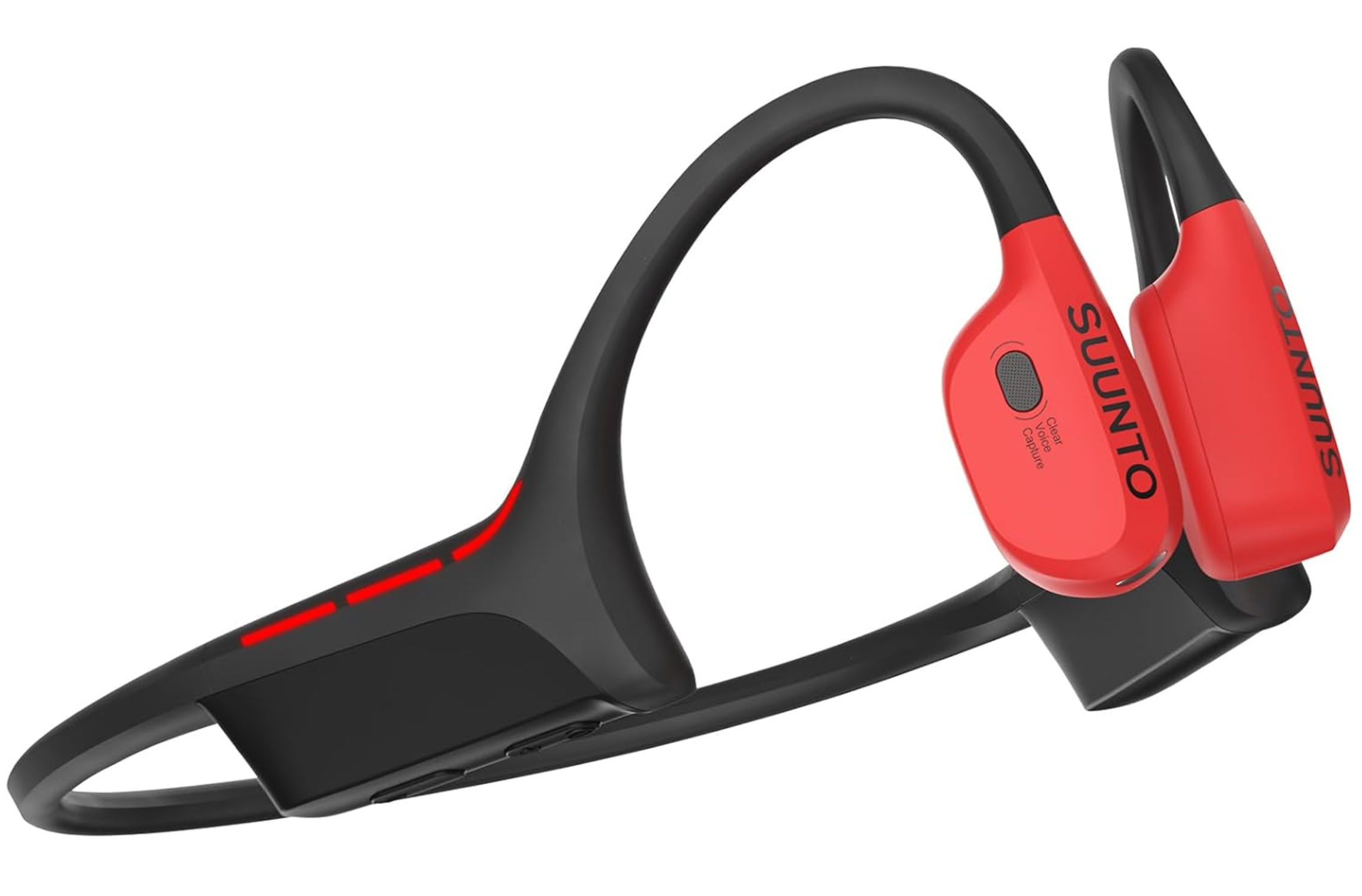
Suunto Wing
The Suunto Wing is a welcome advancement in bone conduction headphones, benefiting from the high quality, low latency aptX Adaptive Bluetooth codec. With the Suunto Wing, ear canals remain unobstructed since sound is transmitted through vibrations along the cheekbones. Buyers can enjoy music and podcasts while remaining aware of their surroundings in outdoor settings. Using a titanium and silicone construction, the Wing is durable, lightweight, and rated to withstand water and sweat. The ability to conduct clear-sounding calls through Clear Voice Capture technology makes the Wing an all-around headset for work and recreation.
- Battery Life
- 30 hours with charging stand
- Wireless?
- Yes
- Compatible With
- Mobile, PC, Mac
- Brand
- Suunto
- Sensitivity
- 117dB@1kHz -10dBFS
- Frequency Response
- 20Hz~20kHz
- Impedance
- 6Ω±15%
- Weight
- 40 grams
- Dimensions
- 93.5 mm x 48 mm x 25 mm
- Connectivity
- Bluetooth
- IP rating
- IP67
- Supported codecs
- A2DP, AVRCP, HFP, HSP
- Lightweight and durable construction
- Comfortable to wear for long periods
- Good battery life and well-designed charging stand
- Supports low-latency aptX Adaptive Bluetooth codec
- Much more expensive than many wireless earbuds
- Lack of volume noticeable with music listening
Contents of Package
The Suunto Wing is packaged in a sturdy rectangular and mostly white box.
Inside the packaging, the included parts are carefully separated, including the headphones, a charging stand with a USB cable, a storage bag, earplugs, and a quick start manual.
Design
Looking like a combination of a headset used strictly for calls and earbuds, the Suunto Wing will draw some curiosity. The headphones come in two colors, all-black or mostly black, with red where the sound is transmitted.
The charging stand has a triangular-like shape with flat corners that is nearly as portable as a typical wireless earbud charging case. With grooves that perfectly fit the part of the Wing just above the earlobe hooks, there is little frustration in charging the headphones.
Dual microphones sit inside the right transducer, and there is a button to activate Suunto’s noise-cancellation technology. On the opposite transducer, a multi-function button can skip and pause audio tracks and accept calls.
Underneath the component attached to the right ear hook, listeners will find buttons to power on the headphones, adjust the volume, and enter pairing mode. Visible contact points also enable a reliable connection to the charging stand.
Another distinguishing feature of the Wing headphones that fans of RGB gaming gear will appreciate is its side LED lights. The idea behind them is less about flash and more geared toward maintaining visibility in the dark. On the charging stand, there are similar lights that indicate current power levels.
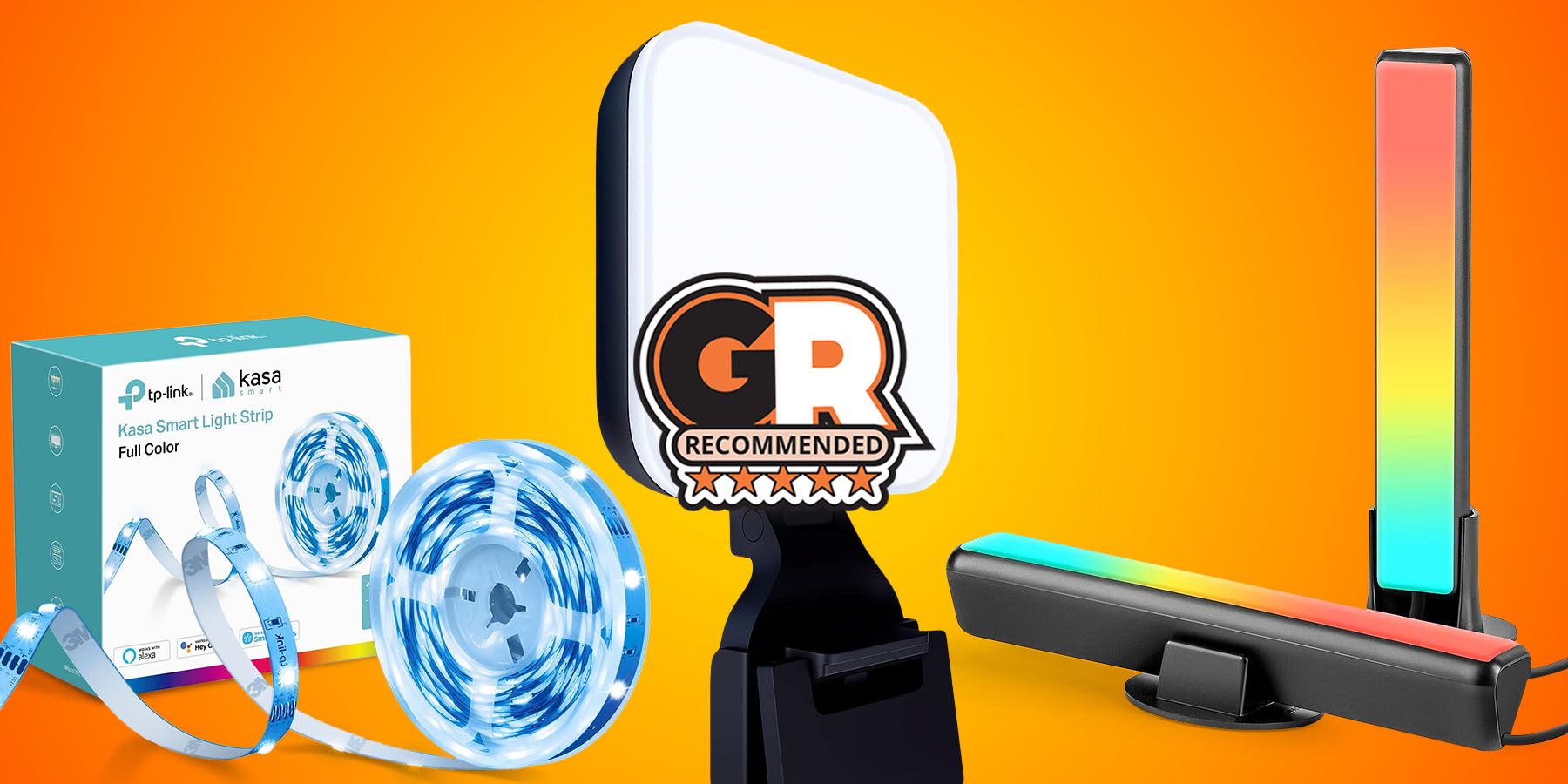
The Best LED Lights for Gaming Rooms
Adding some awesome RGB LED lights to a space can elevate a gaming experience. These are some of the best LED lights for gaming rooms.
With a combination of silicone and titanium materials, the Suunto Wing weighs only 40 grams or about an ounce and a half. The headphones have a rubbery texture that can survive the outdoor elements and are quite flexible, except for the transducers at the ends.
On someone brave enough to bike on rugged outdoor trails, a buyer can get an idea of how to wear the Wing headphones. The band is meant to sit on the bottom of the back of the neck while the portion holding the transducers wraps around the earlobes. Unlike most athletic-oriented headphones and earbuds, bone-conduction headphones produce sound waves just outside the ears rather than on or in them. This design also enables the Wing headphones to sit securely on their heads without interfering with bike and motorcycle helmets.
Performance and Usage
When considering purchasing bone-conduction headphones, it’s important to realize who the target market is. Technology has improved to the point that music sounds more convincing, but passing through bone, volume levels will still take a hit. Still, the Suunto Wing is a solution for listeners who find traditional earbuds uncomfortable or can’t be blocked off from the outside world. The headphones are loud enough to listen to podcasts, and with a microphone, they are enticing headsets for working days. Away from homes and offices, the Wing really becomes an asset, since hikers can recognize any approaching dangers before disaster strikes.
Using the Suunto Wing headphones for the first time is a bit of a strange experience. The transducers give off vibrations on the top of the jawbones, increasing with added volume and bass. Even though sounds don’t come through quite as clearly, they are positioned close enough to the eardrums to make listeners think they are wearing headphones. However, after an hour or so, what stands out more about the Wing is how comfortable a device it is. The transducers stay secure against the cheeks but are not tight enough to feel obtrusive. Similarly, the headband or neckband floats above the ears and becomes virtually unnoticeable as it extends around the neck.
When running outside or on a treadmill, the Wing doesn’t stay entirely motionless, with the headband bouncing a bit on the back of the neck. Fortunately, the earbuds generally hold their position next to the ears without sliding to the point where the sound quality changes.
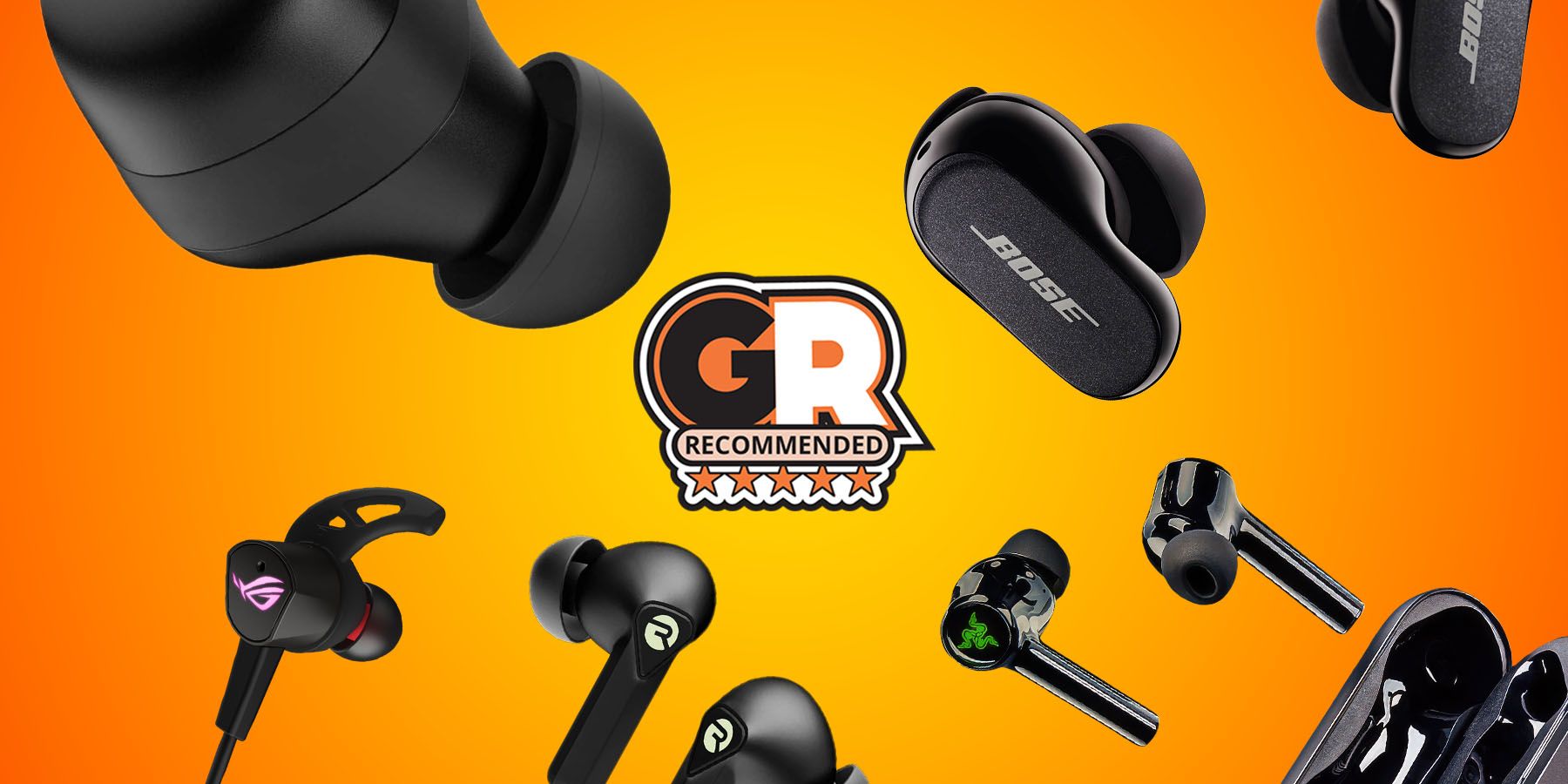
The Best Gaming Earbuds To Buy In 2024
Earbuds are becoming increasingly more popular among gamers, and these are the best ones available right now.
Because of how the transducers rest against bones, lower tones, and bass thump, as well as some conventional earbuds. Overall, music doesn’t sound as rich and dynamic, and audiophiles should probably look elsewhere. While music sounds a bit muted even at maximum volume, dialogue in movies is clear enough, and the Wing pairs well as headphones for a mobile gaming controller and smartphone. Suunto does provide a pair of earplugs with the headphones, which results in a more private earbuds-type listening experience. Of course, using earplugs somewhat defeats the purpose of bone-conducting headphones.
The Bluetooth pairing process with the Suunto Wing doesn’t differ dramatically from most wireless earbuds. The small plus and minus buttons on the right side of the headphones must be held for three to five seconds, depending on if the device is already on. The Suunto app also has a pairing screen but relies on connecting the headphones outside the software first. Then, listeners should find the Wing as an available device in the Bluetooth menus of smartphones, PCs, and media players. The Wing headphones support dual device pairing, which, like wireless earbuds, can be an adventure to get working properly. Even so, following the instructions in the user guide, buyers can save some time compared to completing the entire process over and over with each source.
While gaming during whitewater rafting may not be the main appeal of the Wing headphones, its support for Bluetooth 5.2 and aptX-Adaptive results in low-latency audio. A paired device will need to support this codec, but gamers can expect minimal lag if using the Wing during mobile gaming.
The microphone quality of the Suunto Wing won’t match the boom mics on gaming headsets, but it’s somewhat better than the tinny mics on wireless earbuds. Despite the background noise that remains noticeable with bone-conduction headphones, callers’ voices remain reasonably isolated. Suunto’s Clear Voice Capture technology helps with communication, even in crowded offices or less than peaceful outdoor settings.
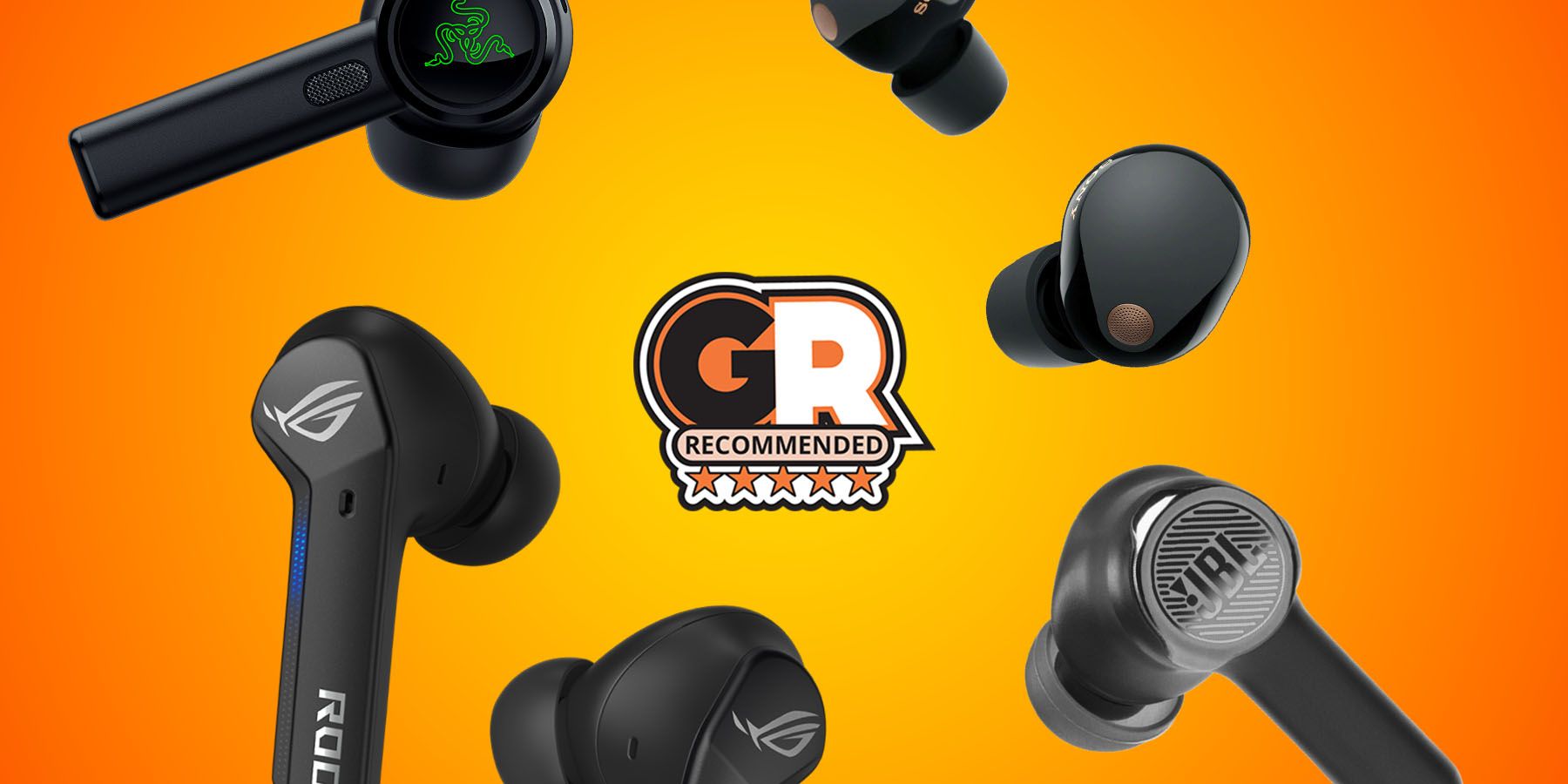
Best Noise Cancelling Earbuds for Gaming
As earbubds become more popular with gamers, the hunt to find the best noise cancelling ones has become critical.
Buttons are scattered around the Wing, so the controls can take a while to feel second nature. Fortunately, the plus, minus, and pairing buttons have enough tactile feel to locate without much effort. The Suunto Wing doesn’t offer touch controls; commands are activated by head motion. After enabling the feature in the app or holding the multi-function button for three seconds, shaking a head twice will skip to the next music track, while nodding and shaking can accept or decline calls. These motion controls work fairly well, but riding on aggressive terrain could disrupt them.
Gamers who fumble with wireless charging stands for gaming headsets like the Astro A50X might have concerns about the Wing’s dock. Charging cases that cradle small wireless earbuds inside of them are hard to get wrong, but the Wing headphones stay exposed on their stand. Fortunately, the headphones slot nicely into the grooves of the charger, which recharges using an included USB-C cable. The Wing will tumble to the floor if the dock is turned upside down, but otherwise, it will continue charging even after some nudges. Bright red LED lights that signal charging status are also a nice touch.
Battery life is generally excellent with the Suunto Wing, and listeners can expect up to 10 hours of playtime on a single charge. In practice, this specific unit lasted closer to seven hours, but that was with the LED lights active at all times and a higher-than-average volume. This was hardly unacceptable, especially considering the charging stand can supply users with 20 hours more of power. Charging is also rapid, thanks to Wing embracing the fast USB-C charging increasingly seen in mice, headsets, and other peripherals.
Software
Suunto is a company known more for its smartwatches than headphones, and this quickly becomes apparent in their Android and iPhone apps. It was not immediately obvious how to access settings for the Wing since most menus seem to think a user owns a watch. Once clicking on the user profile icon on the upper left, an option for “My Headphones” appears, which puts most available settings on a single screen. From there, users can toggle on and off features like head movement control and LED lights. Most of these settings are accessible using the buttons on the headphones, including switching the sound mode to Normal or Outdoors. Outdoor mode adjusts the frequencies of an audio signal and boosts the volume, though changes are modest.
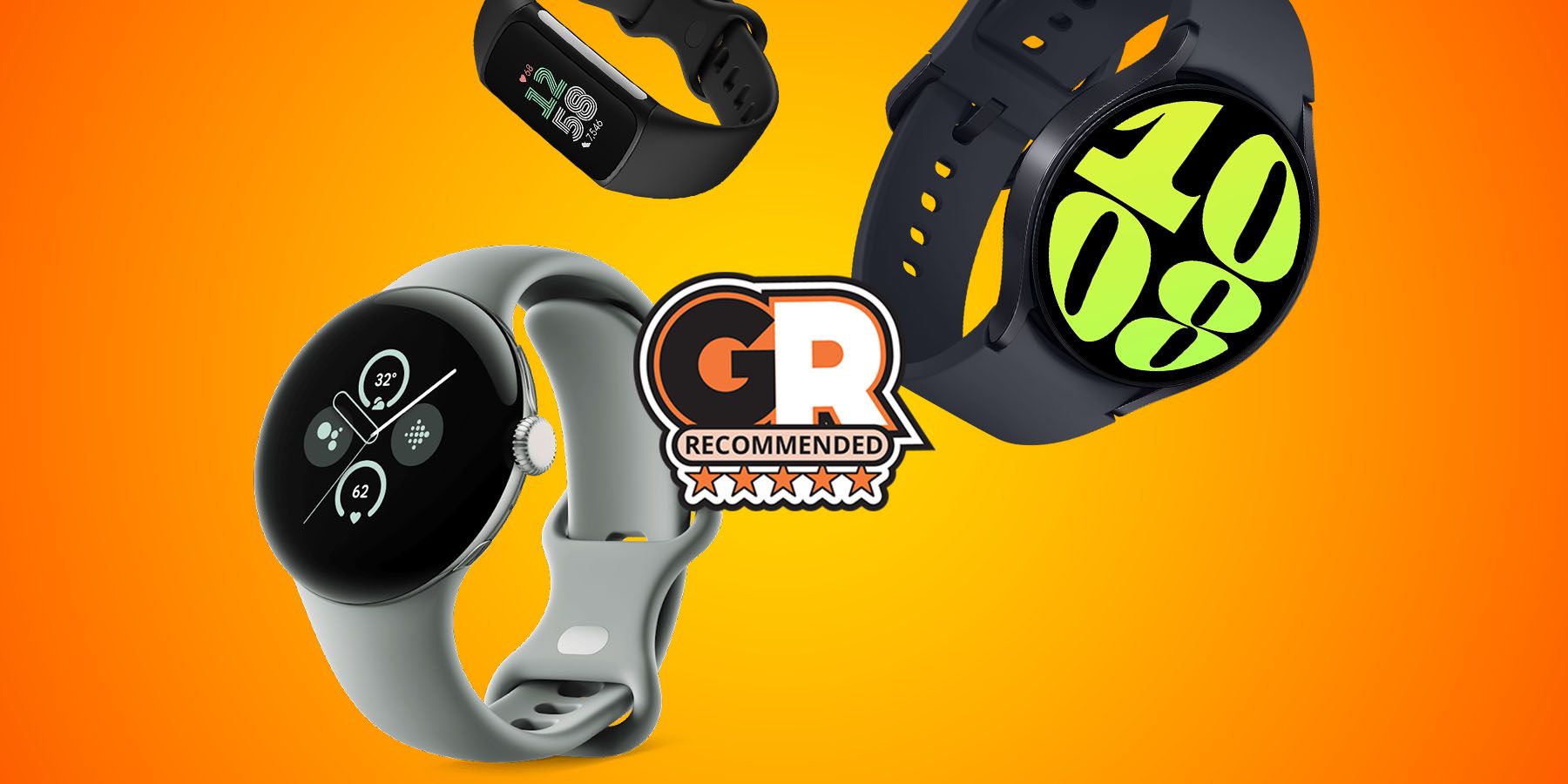
The Best Smartwatches for Android in 2024
Smartwatches are an excellent companion to Android devices whether people want to track steps, get notifications, or just have a slick-looking watch.
If a Wing owner does possess a compatible smartwatch, fitness tracking features unlock in the app. Also, listeners will be given regular voice updates through headphones about the status of a workout. Even if most changes to the Wing are accessible outside the app, the software is straightforward to use and stable.
Conclusion

Suunto Wing
The Suunto Wing is a welcome advancement in bone conduction headphones, benefiting from the high quality, low latency aptX Adaptive Bluetooth codec. With the Suunto Wing, ear canals remain unobstructed since sound is transmitted through vibrations along the cheekbones. Buyers can enjoy music and podcasts while remaining aware of their surroundings in outdoor settings. Using a titanium and silicone construction, the Wing is durable, lightweight, and rated to withstand water and sweat. The ability to conduct clear-sounding calls through Clear Voice Capture technology makes the Wing an all-around headset for work and recreation.
- Battery Life
- 30 hours with charging stand
- Wireless?
- Yes
- Compatible With
- Mobile, PC, Mac
- Brand
- Suunto
- Sensitivity
- 117dB@1kHz -10dBFS
- Frequency Response
- 20Hz~20kHz
- Impedance
- 6Ω±15%
- Weight
- 40 grams
- Dimensions
- 93.5 mm x 48 mm x 25 mm
- Connectivity
- Bluetooth
- IP rating
- IP67
- Supported codecs
- A2DP, AVRCP, HFP, HSP
- Lightweight and durable construction
- Comfortable to wear for long periods
- Good battery life and well-designed charging stand
- Supports low-latency aptX Adaptive Bluetooth codec
- Much more expensive than most wireless earbuds
- Lack of volume noticeable with music listening
The Suunto Wing headphones accomplish its goal of providing a pain-free experience while keeping listeners in tune with the outside world. While they aren’t the best choice for at-home gaming and music enjoyment, the headphone’s soundscape is more than adequate for various scenarios. The Wing also embraces low-latency Bluetooth protocols that especially suit mobile gamers.
Suunto clearly gave considerable thought to every aspect of the Wing’s design. The headphones strike a compromise between durability and portability with a flexible and resilient exterior. LED lighting makes the Wing stand out from the crowd and allows jogging and biking to be a safer nighttime activity. The wireless charging dock is just as impressive and as simple to use as the case that’s included with many wireless earbuds.
Bone-conduction headphones are still fairly niche products, but they’re getting more popular. The cheaper options have the build quality of budget headphones, but the Wing’s asking price is still tough to swallow. Regardless, the Suunto Wing is a worthwhile investment for buyers who desire a long-term alternative to earbuds and aren’t willing to sacrifice too much sound quality.
Many buyers may be unfamiliar with bone-conduction headphones, but the Suunto Wing is not unique in the marketplace. Probably the most recognizable brand name for this category of audio gear is Shokz. This manufacturer’s OpenRun Pro headphones are celebrated for their outstanding build quality. However, they lack a wireless charging stand, and their IP55 rating falls short of the Wing’s moisture resistance. The best alternative for swimmers and divers may be the H2O Audio Tri Pro, which is completely submersible underwater and has internal storage for when Bluetooth signals are blocked. Finally, the Mojawa Run Air competes well against the Suunto Wing for less money but occasionally suffers from bass distortion.
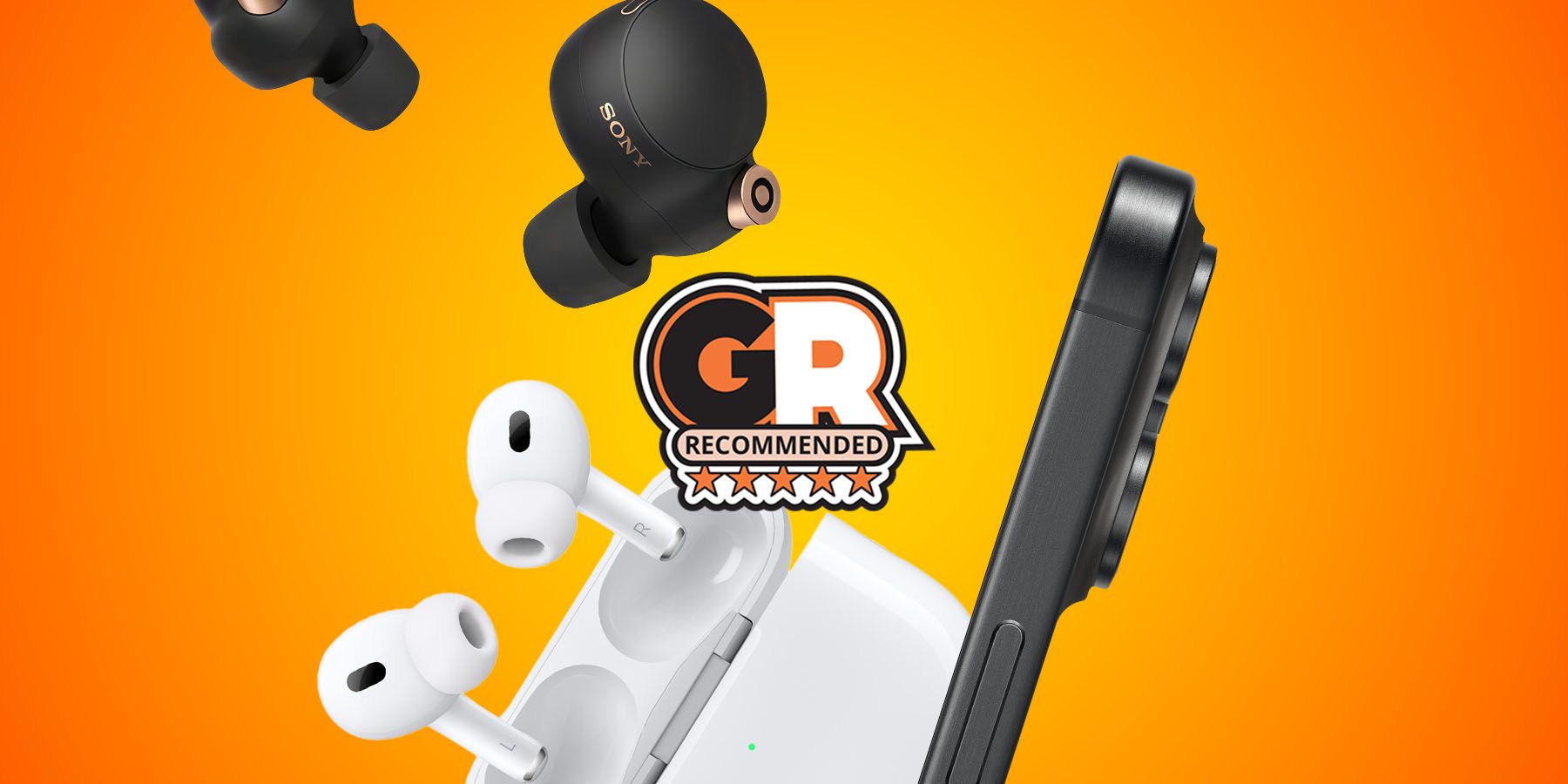
The Best Earbuds for iPhone in 2024
The best earbuds for iPhones are AirPods Pro, right? While that is the answer for some iPhone users, the search doesn’t end there.
FAQ
Q: Are bone conduction headphones as good as regular headphones?
Bone-conduction headphones typically struggle to match the volume and balanced soundscape of traditional headphones. However, they are invaluable to buyers who find headphones or earbuds uncomfortable or can’t afford to shut out the outside world.
Q: Can other people hear bone conduction headphones?
When used at higher volumes, observers can hear sound from bone-conduction headphones. Even so, the sound leakage is not significantly greater than with open-back headphones and headsets.
Q: What are the risks of bone conduction?
Like with all audio gear, using bone-conduction headphones at extremely high volumes can lead to hearing loss. In rare instances, users may experience jaw pain or dizziness. However, the risk is minimal since bone-conduction headphones are not positioned as close to the eardrums as with earbuds.


